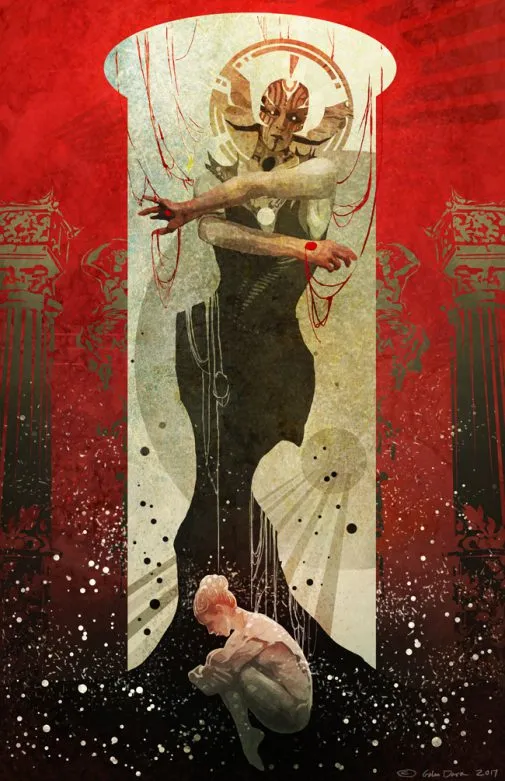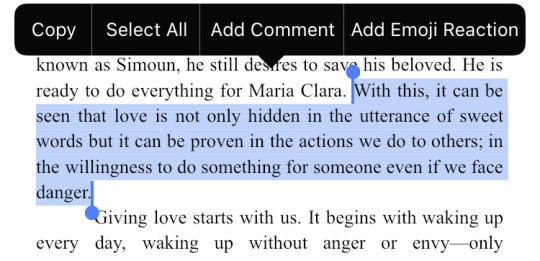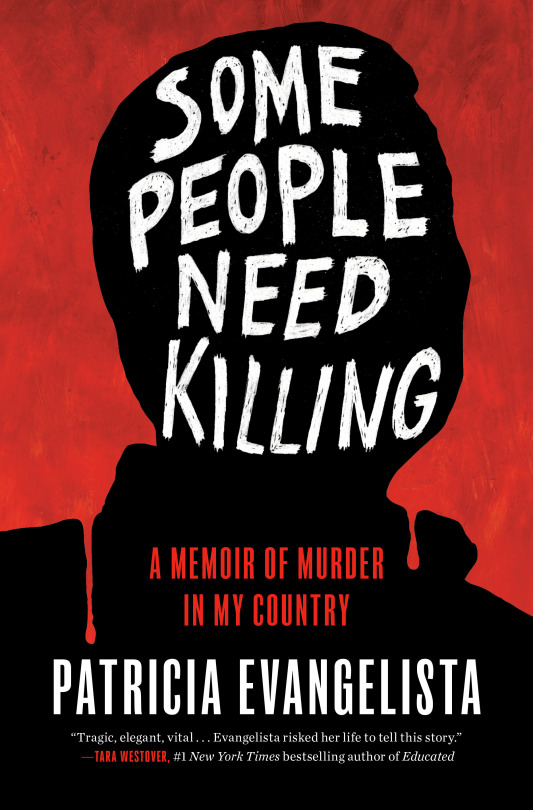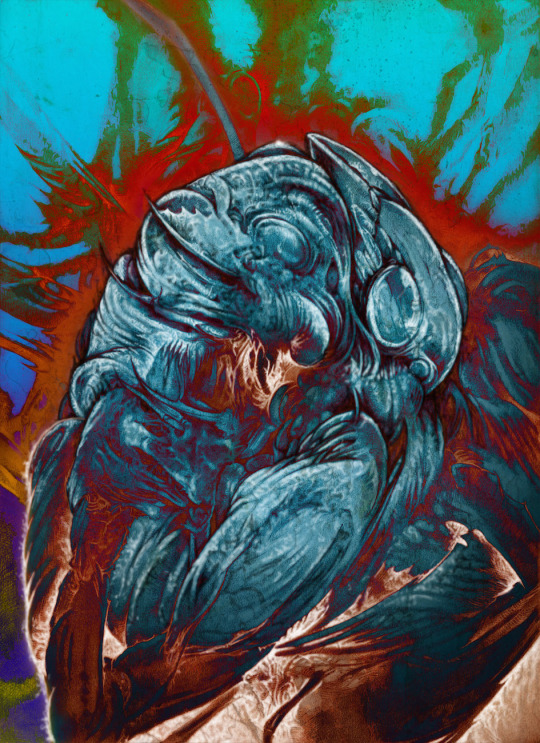#Filipino literature
Text

Angela Gabrielle Fabunan, Midway
34 notes
·
View notes
Text

"These Constellations Will Be Yours" is available to read here
#short stories#short story#these constellations will be yours#elaine cuyegkeng#21st century literature#english language literature#filipino literature#asian literature#have you read this short fiction?#book polls#completed polls
15 notes
·
View notes
Text
The Philippines is one of the most dangerous places in the world for journalists, but the threat, in my mind at least, was out in the provinces, where private armies and local officials operated with impunity. I was working for the largest television network and the highest circulated broadsheet in Manila. I also assumed, correctly as it turned out, that the assassination of a onetime national treasure would be more trouble than it was worth.
from Some People Need Killing: A Memoir of Murder in My Country, by Patricia Evangelista
#quotes#some people need killing#patricia evangelista#nonfiction#journalism#history#politics#crime#books#filipino history#filipino politics#filipino literature#filipino author
14 notes
·
View notes
Text
Rizal's death is very much reflected by Elias' death in noli me tangere and even more to think about was that Rizal based Elias on himself or at least a rebellious, angry part of himself that was fueled even more during his difficult time in Europe writing the book.
"I shall die without seeing the dawn break upon my homeland. You, who shall see it, salute it! Do not forget those who have fallen during the night.” - Chapter 63, Noli me tangere. Dr. Jose Rizal
Like Elias, Rizal fell during "the night" (a time when Filipinos were still under the oppression of the spaniards). He never did get to see "the dawn break."
Rizal, like Elias, was sacrificing himself for his homeland by writing this book, which he knew would have an impact on Filipinos, essentially "opening their eyes to the truth." He knew that by doing this, he's making himself an enemy to the spaniards. Nevertheless, both he and Elias are glad to make a sacrifice for their fellow countrymen
#noli me tangere#Dr. Jose Rizal#filipino literature#maria clara at ibarra#el filibusterismo#rereading noli#its so much more emotional when you learn the context and history it was based on
25 notes
·
View notes
Text

I have a favorite essay from 10th grade; it’s about love in every aspects of your life and how endless its length is, with Maria Clara and Crisostomo Ibarra’s love (from a famous and cherished novella work of Jose Rizal, the Philippines’ national hero) as an example. it’s originally written in Tagalog but I translated it, and here’s my most loved part.
#academic essay#filipino literature#maria clara at ibarra#el filibusterismo#noli me tangere#love is unfathomable i remember having a hard time writing this#areil’s writing#writerblr
32 notes
·
View notes
Text
Oh yeah, I was interested in reading more fiction about folk stories and monsters written by local authors and I was curious if anyone has recommendations. I'm interested in more adult fic stuff and possibly getting some of the YA stuff too since I honestly hadn't read any YA of this type like at all.
I keep seeing Janus Silang and I wasn't sure if I should at least read the first book for that one just to get the feel of it. Anyone who's read this have any thoughts on it? If not, any suggested book series?
#mayaposts#philippines#filipino#filipino literature#ive already gotten through trese btw but i hadnt gotten around the newest volume#but yeah more of that#like i just wanna see how ither authors use the folklore#janus silang
9 notes
·
View notes
Text

Noli Me Tangere (vintage-style poster)
Artwork Title: Maria Clara and Crisostomo Ibarra
Re-edited and hi-res file of both the artwork and poster now on my patreon
DOWNLOAD AND BE A PATRON HERE (patreon link)
#art#watercolor#watercolor illustration#watercolor painting#artwork#watercolor artwork#illustration#filipino#filipino classics#filipino literature#noli me tangere#touch me not#jose rizal#maria clara#crisostomo ibarra#maria clara and crisostomo ibarra#maria clara at ibarra#fan art#vintage posters#vintage art#colonial philippines
22 notes
·
View notes
Text
from 2020-2022 fsr I got way too obsessed with Noli me Tangere/El Filibusterismo and was like “ok but what if….steampunk au” that has a lot of fighting game elements fsr (????) and it never left the concept art level so I’m revisiting my old stuff and redesigning them for nostalgia reasons.
This one’s for Juli and Basilio (Close Range Fighter, Medic). I also made a bunch of stuff for the rest of the tropang nerds because yea. (Lord help me my art style is having a crisis because it keeps shifting every 2 posts on here)

15 notes
·
View notes
Text

Title: Some People Need Killing: A Memoir of Murder in My Country
Author: Patricia Evangelista
Genre/s: nonfiction, history, politics, crime, journalism
Content/Trigger Warning/s: journalistic depictions and discussions of crimes such as murder, kidnapping, and rape, as well as natural disasters, including the effects of Typhoon Haiyan (PH name Yolanda)
Summary (from publisher's page): “My job is to go to places where people die. I pack my bags, talk to the survivors, write my stories, then go home to wait for the next catastrophe. I don’t wait very long.”
Journalist Patricia Evangelista came of age in the aftermath of a street revolution that forged a new future for the Philippines. Three decades later, in the face of mounting inequality, the nation discovered the fragility of its democratic institutions under the regime of strongman Rodrigo Duterte.
Some People Need Killing is Evangelista’s meticulously reported and deeply human chronicle of the Philippines’ drug war. For six years, Evangelista chronicled the killings carried out by police and vigilantes in the name of Duterte’s war on drugs—a war that has led to the slaughter of thousands—immersing herself in the world of killers and survivors and capturing the atmosphere of fear created when an elected president decides that some lives are worth less than others.
The book takes its title from a vigilante whose words seemed to reflect the psychological accommodation that most of the country had made: “I’m really not a bad guy,” he said. “I’m not all bad. Some people need killing.”
A profound act of witness and a tour de force of literary journalism, Some People Need Killing is also a brilliant dissection of the grammar of violence and an important investigation of the human impulses to dominate and resist.
Buy Here: https://bookshop.org/p/books/some-people-need-killing-a-memoir-of-murder-in-my-country-patricia-evangelista/19968748
Spoiler-Free Review: Okay, so. I already had this in my TBR and was planning to read it in some vague point in the future, but a close friend of mine picked it up and mentioned it in a tweet. Since I was midway through Mona Awad’s Rouge at the time, I promised to give it a shot once I was done with that. The finishing of THAT book got further delayed because Paladin’s Faith got released and I had to read THAT, then continued with Rouge to finish it. When it was all said and done though I picked this up and got stuck in.
Now just to be clear: I am Filipino, have lived in the Philippines all my life, and am lucky enough to live a privileged life by the standards of my country. I didn’t vote for Rodrigo Duterte in the 2016 elections because I liked neither his politics nor his values, and I certainly didn’t like the stories I’d read in the news about the Davao Death Squad, and so was one of many people who felt that sucking wave of dread when it was announced he’d won.
What followed was a nightmare I was lucky enough to view from a distance (afforded to me by my aforementioned privilege), and through the hazy fog of slow-rolling grief because of my mother’s cancer diagnosis, treatment, and death in the following years. I didn’t see all the news reports, but I did see the reactions on social media. One of the earliest ones was #CardboardJustice, which was started by my friend Hope Swann, and then popularized by Adrienne Onday. It was a response to how many murder victims had been turning up with a piece of cardboard attached to them with the statement “Pusher ako” (”I am a [drug] pusher”), as if that would justify their slaughter to those who came upon the victim’s body, as if all that was needed to pronounce one guilty of drug pushing was to have a cardboard sign saying so on one’s person. #CardboardJustice was one of the first grassroots movements pushing back against the drug war, and it was adopted quite widely in the latter end of 2016 and early into 2017.
Another one that sticks out in my mind is #Tumindig (”Stand Up”), which was inspired by the artwork of the same name by Kevin Eric “Tarantadong Kalbo” Raymundo. That artwork, released in 2021, was in response to Duterte’s handling of the COVID-19 pandemic, but also to his government’s half-dozen years of murder, red-tagging, and censorship. Like #CardboardJustice, #Tumindig inspired a movement, especially among other artists - and it was still popular enough by the time the 2022 national elections rolled around to be used by those supporting Leni Robredo’s presidential campaign. #CardboardJustice and #Tumindig - one emerging from the first year of the Duterte presidency, the other from its last - bookend six years of continuous pushback against him and his government.
But what’s puzzling is, there wasn’t any mention of this in Evangelista’s book. And even if she was unaware of those specific movements, surely she was aware of the many other grassroots movements that emerged throughout Duterte’s presidency? People from all walks of life protested against Duterte from before the beginning of his regime, all the way to the end, and even beyond. Why was no mention made of these efforts to push back? My assumption, of course, would be that any mention of these movements was left out for the sake of keeping the book’s narrative and subject matter focused, but if there was room for Evangelista’s personal stories, why was there no room to tell, even in brief, the stories of those who protested and fought back? The concepts of “lumaban” and “nanlaban” are key themes in this book, so why didn’t Evangelista even nod to the protests and protesters?
I would hope that readers, especially foreign readers, will know better than to assume that ALL Filipinos approved of what Duterte was doing, but a part of me is too cynical (especially where white Westerners are concerned) to believe that will be the case. Worse, they might assume that the masa (”the masses”) were uniformly duped into voting for him. So let me say, here and now: many Filipinos from all walks of life saw through Duterte and knew him for what he was. We didn’t vote for him, and we fought back, each in our own way, all throughout his presidency. Some of us - students, activists, social workers, journalists, and many more - were killed, or disappeared, becoming the desaparecidos (”the disappeared”) of the Duterte regime. Many were not directly targeted, but fled due to the dire circumstances both economic and social produced by his regime, looking for better and safer work and living conditions elsewhere. And many of us continue to fight back today.
As for Evangelista herself, her personal stories are scattered all throughout this book, though they are most present at the beginning. While I don’t think there’s really anything wrong with the inclusion of such stories (not least because “memoir” is right there in the book’s subtitle), I kind of found myself sliding through them more quickly as I sought out the more journalistic material on the drug war. It’s not that Evangelista’s personal story isn’t INTERESTING, per se, but I think it would be more interesting to foreigners, who didn’t witness the drug war in real time like most Filipinos did.
Overall I think this is a pretty important read - or, at least, for foreigners: for anyone who, as I said, didn’t see the drug war happening in real time, in front and all around them. And for the most part, it certainly reads like it's aimed at that specific audience, shining a light on events that the rest of the world probably didn’t know about, or only understood peripherally. It’s timely too, considering the ICC case against Duterte plus who the current President and Vice President are. But for those of us who WERE here to witness the drug war, who had to live with Duterte running the country for six entire years and feared he’d declare martial law and rule us for much longer - this book might feel a bit lacking in some areas, not least the coverage of the many protests across those six years. Many people did what they could to fight back - some even disappeared, or were killed, or had to go into hiding or flee to protect themselves and/or those closest to them. It would have been nice to see them get even some coverage in this book.
Rating: four bullets
#book review#book reviews#some people need killing#patricia evangelista#nonfiction#journalism#history#politics#crime#books#filipino history#filipino politics#filipino literature#filipino author
8 notes
·
View notes
Text

When the Hibiscus Falls is a gorgeous set of short stories by M. Evelina Galang about the Filipino and Filipino American experience—from homecomings to escapes and new beginnings, from ancestors and elders to unruly grandchildren. The book deals a lot with rogue people and the way we encounter, recognize, and deal with our heritage.
In "Drowning," a misbehaved, rebellious older sister dies, and the youngest is left with the consequences. In "When the Hibiscus Falls," the protagonist's cousin Mayari has fled in the middle of the Covid pandemic, and Sol arrives in Miami in an attempt to bring her home. In "Fighting Filipina," a young girl grates under the rise of anti-Asian American hatred around her, and is desperate to protect her grandmother from its effects. There are so many kinds of stories in this collection, but Galang really hits on something powerful in how the young cannot escape their heritage, how the old are haunted by the traumas or scars of the past, and how the generations clash and come together and fall apart.
The scattering of Tagalog throughout and Galang's rich language bring the Philippines and the characters of all of her stories into vivid life and character. I enjoyed all of these tales, and I hope that people put this on hold at their local libraries before its June 13 release. This book is massively under-hyped given how excellent the stories here are!
Content warnings for sexual assault (implied & depicted), death, grief, trauma, hate crimes, xenophobia, racism, panic/anxiety.
#m. evelina galang#when the hibiscus falls#short story collection#filipino literature#upcoming books#my book reviews
20 notes
·
View notes
Text
Would it be a good idea to create a modernized version of baybayin?
I was shocked to discover that Baybayin was actually really really easy to learn if you took the time to do it, especially since we already know the language itself. So I was thinking, why don't we revive the use of Baybayin in day to day conversation during the modern era? Maybe we could expand its usage to the common filipino in ways that aren't just for aesthetic. It does not have to be mandatory, but it would be very interesting and fun.
However, its a bit hard to be expressive with Baybayin because of the lack of something like exclamation points or CAPITALIZATION. Cussing with Baybayin just doesn't have the same flavor as saying TANGINA in all caps.
I know other Southeast Asian countries have scripts that can survive without that kind of thing (thai), however we have already used these foreign punctuations for so long in our own writing, especially in Filipino contemporary literature (written in Filipino) and in a bunch of other things, that it has basically already become a part of Filipino.
We write questions like "Ano?", "Bakit?", "Ha?!?!?" and we can also use stuff like these: ; : ()
I don't think adding capitalization would look good. But maybe we should make something like an exclamation point? What I'm trying to say is, maybe we should have a modernized version of Baybayin that could carry over the modern grammar rules for writing in Filipino?
#baybayin#tagalog#filipino#philippines#language#pinoy#literature#filipino literature#filipino culture#filipino language
69 notes
·
View notes
Text

"The First of Her Name" is available to read here
#short stories#short story#the first of her name#elaine cuyegkeng#filipino literature#asian literature#21st century literature#english language literature#have you read this short fiction?#book polls#completed polls#links to text
6 notes
·
View notes
Text
Kill them all, said the president. The drug problem would be eradicated in three to six months. He would resign or die if he failed.
But if it wasn’t to be murder, the police had to have a reason to kill them.
That reason was the caveat built into the president’s every speech, the sort that could be typed out in police reports and presented to the “bleeding-heart human rights people” who complained that the president was a butcher. Kill them if they resist violently. Shoot if they fight back.
Get them before they get you.
from Some People Need Killing: A Memoir of Murder in My Country, by Patricia Evangelista
#quotes#some people need killing#patricia evangelista#nonfiction#journalism#history#politics#crime#books#filipino history#filipino politics#filipino literature#filipino author
3 notes
·
View notes
Text
i am in school literally posting on tumblr
can the El Filibusterismo fandom please catch me up on what in the holy hell is happening??? why is Crisostomo Ibarra dead??? Why is Basilio Everywhere?????
#el filibusterismo#noli me tangere#send help#school#filipino literature#jose rizal#simoun is my blorbo
18 notes
·
View notes
Text
"So all these years—since when?—he had been seeing the light of dead stars, long extinguished, yet seemingly still in their appointed places in the heavens."
Paz Márquez-Benítez in "Dead Stars", 1925
7 notes
·
View notes
Text
It's the Christmas season! Don't forget your NOCHE BUENA! ✨✨✨
NOCHE BUENA I mean the chapter title of KABANATA 63 OF NOLI ME TANGE
Where Basilio follows his ill mother to the woods, not recognizing her own son, as the young boy shouts "Mother! It's me! It's me! Your son!" and she dies, leaving Basilio without anyone in his young young life. He later meets a dying man who helped him rest his mother unto the pyre, and upon his death, he uttered his famous last words:
“I die without seeing dawn’s light shining on my country…You, who will see it, welcome it for me…don’t forget those who fell during the nighttime.”
🎄✨Merry Christmas y'all!!✨🎄
#chapter still hits me to this day#sorry for the negative vibes#but why does it have to all happen in a Christmas eve my poor basilio#And he grew up and nice young man#I love you Basilio walang apelyido#noli me tangere#filipino literature#Basilio#Elias
38 notes
·
View notes